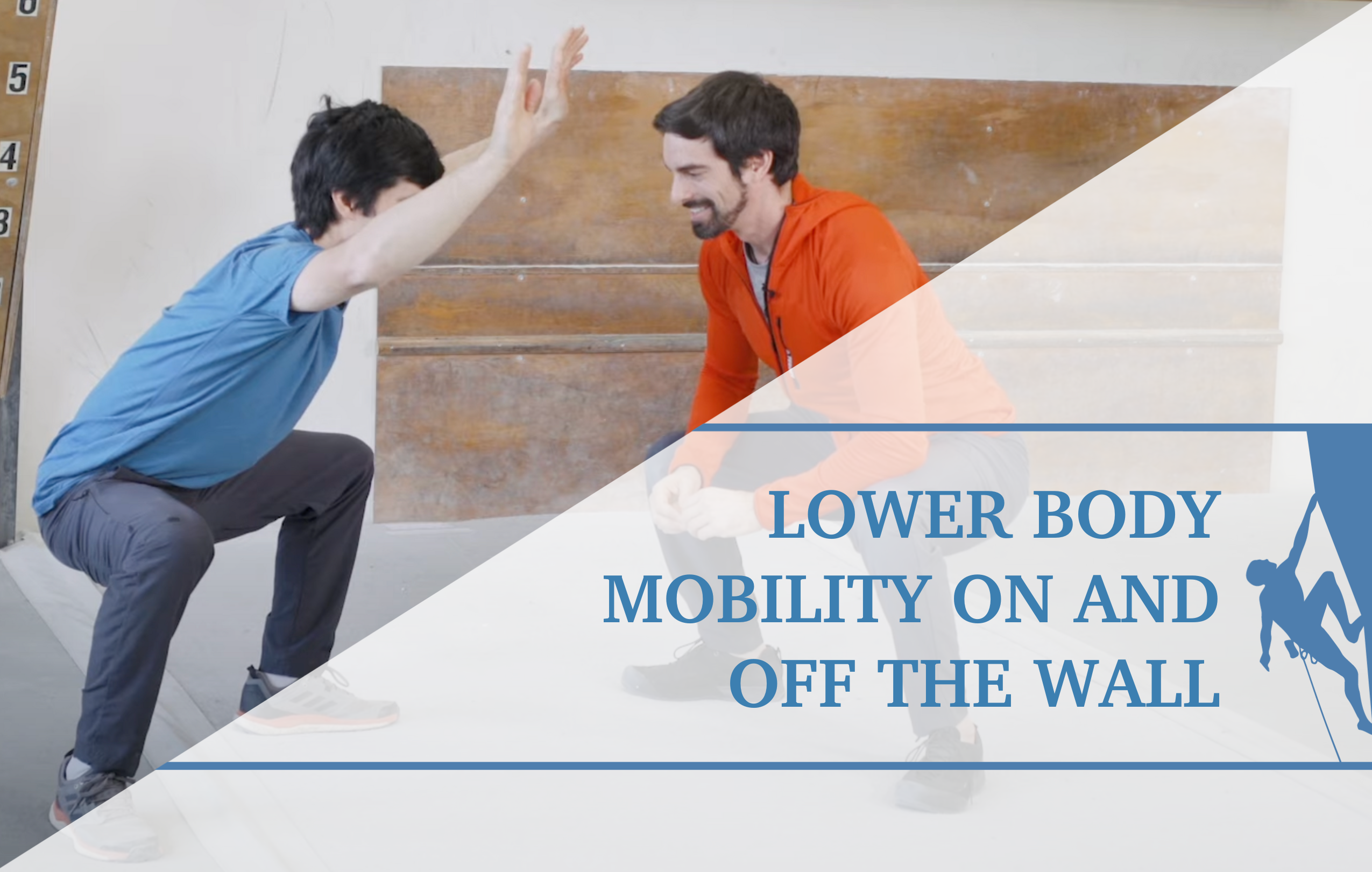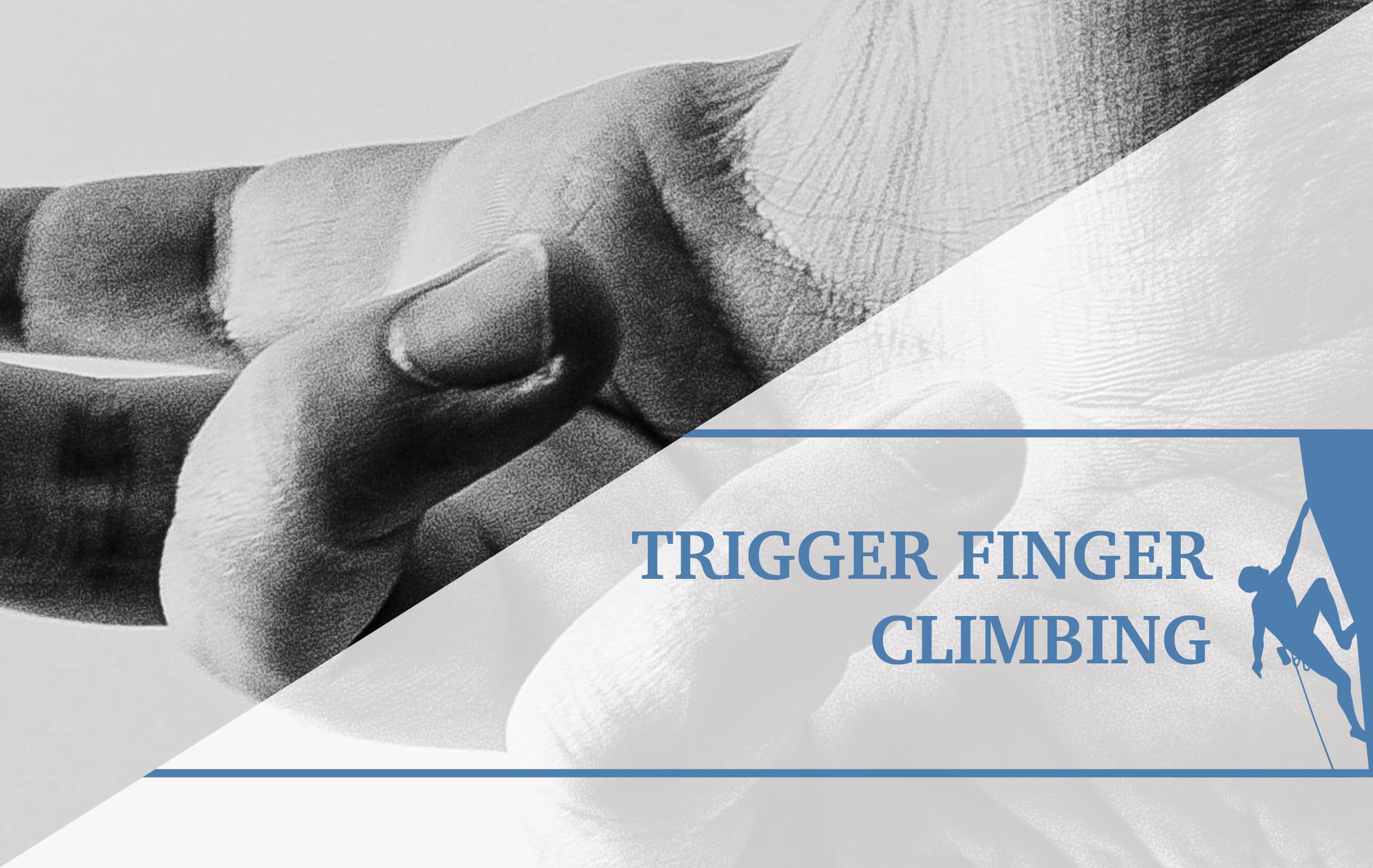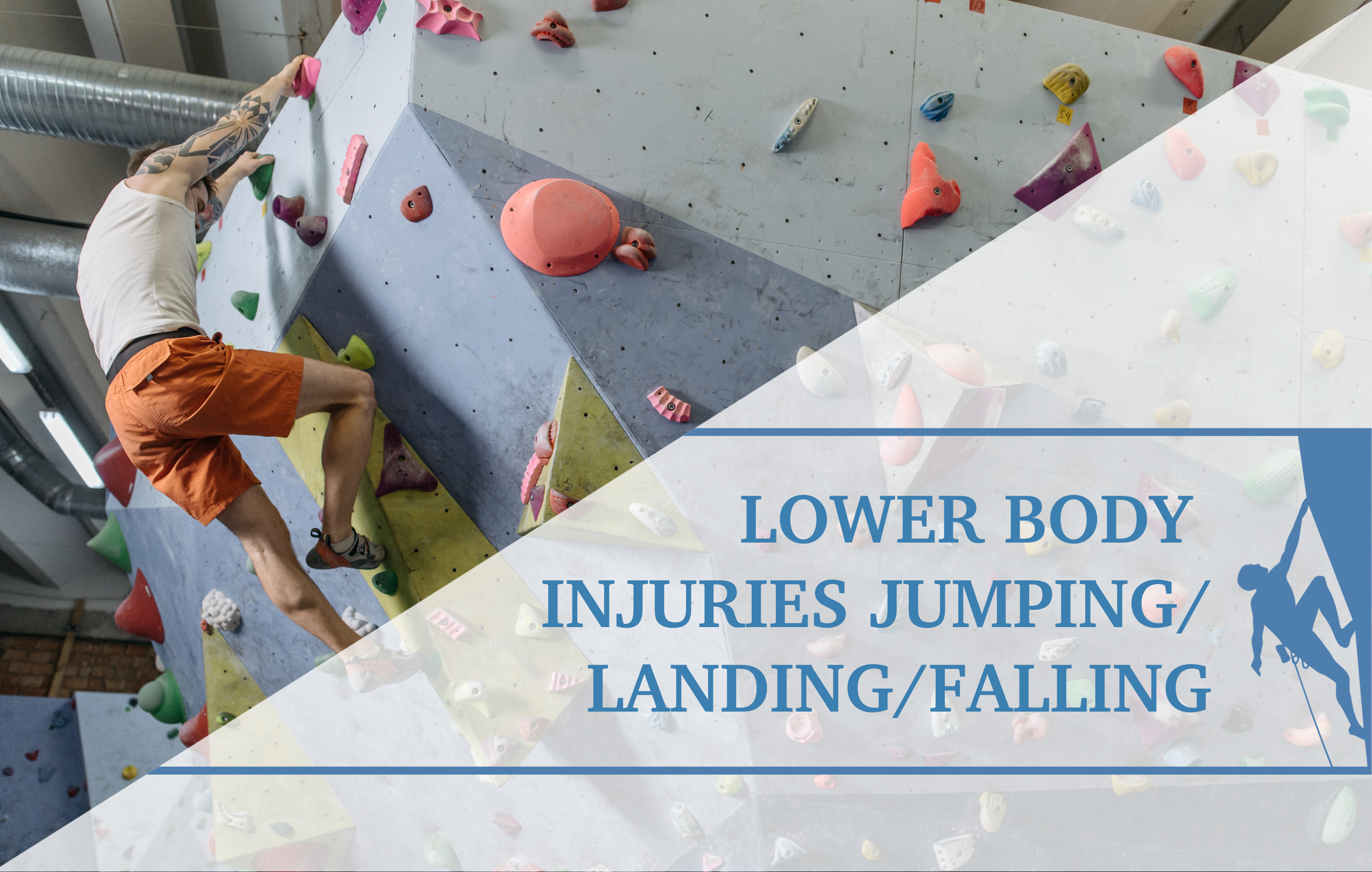Stronger Hips for Injury Prevention and Climbing Performance
When we think about climbing and training, most of the time, you’ll hear “go hangboard and get those fingers strong” or “do some weighted pull ups.” Yet we don’t really hear anything about training our hips, except maybe some stretching. Have you experienced difficulty maintaining tension with your feet constantly slipping during a climb? It could be that your hips are lacking strength and mobility and maybe the hips should be something we train more for climbing. It is an exceptional joint with plenty of musculature to help unload stress off of other body regions and assist in maintaining tension while we climb.
Let’s imagine a climber who only campuses. That’s a lot of load that only the fingers, wrist, elbow, and shoulder are taking up, which may be straining. However, add our legs into the equation and we can unload the structures mentioned above and decrease strain. Basically that was a roundabout way of saying, “learn to use your feet.” Now with that example, we can see that adding our lower extremity joints in climbing helps unload our upper extremity, potentially leading to less injury in our upper body. The hip joint in particular is great at this with its great mobility and stability.
The Anatomy
The hip is just the head of the thigh bone (shaped like a ball) connected to a cup-like structure in the pelvis and that’s our hip joint. It’s ball and socket joint, which allows for great mobility and pretty good stability! Our hip has many motions which includes: flexion, extension, abduction, adduction, external rotation, internal rotation:
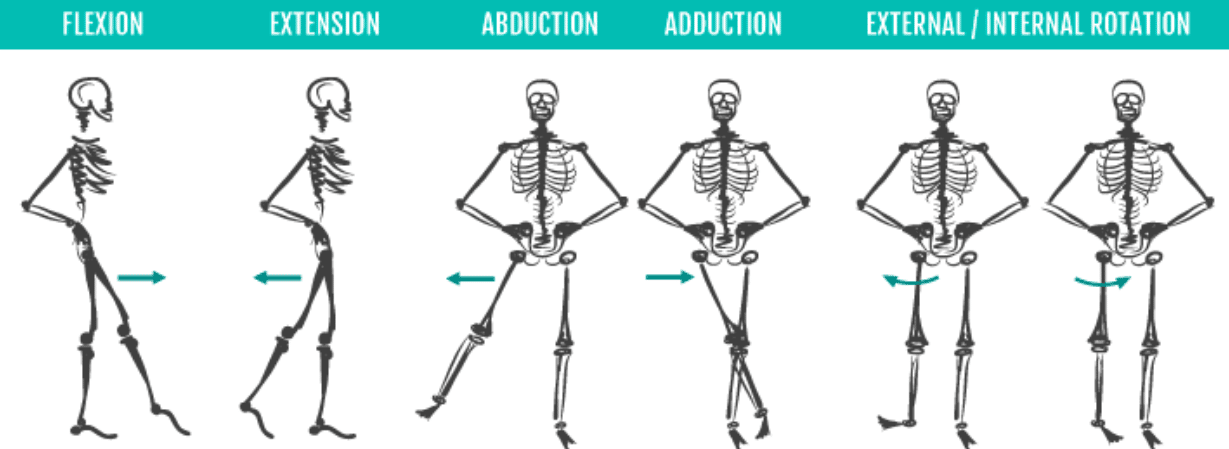
So many motions but each of these can easily become restricted hence why you may have heard to stretch out your hips which is a great idea to improve mobility!
Not only does the hip have excellent mobility, it also has so much musculature that passes through it. For example: gluteus maximus, gluteus medius, gluteus minimus, piriformis, iliacus, psoas major, adductor magnus, adductor longus, adductor brevis, hamstrings, and so many more. That’s a lot of musculature to help keep our hips stable and help in unload our upper body! Let’s take a look at our glute muscles: huge muscles that pass our hip and help perform a variety climbing specific movements. Think about a high step move, your knee is practically at the level of your chest and you’re likely in a lot of hip flexion. However, to high step, we need to perch onto our leg and straighten our hip. This important job is done by our glutes and without them, we would feel quite a bit of strain in our upper body as we would be pulling much harder. So it may be a good idea to get a hip strengthening program going!
Biomechanics of Muscles and Research
Now let’s talk about mobility. Mobility is having the range of motion to perform the motions we want to do. Think about the high step, we need a lot of range of motion in our hips to bring our feet up. As you may know, stretching can help in improving mobility! However, it should be noted that stretching may not be a long term solution for mobility as shown by review done by Weppler and Magnusson. This review showed that stretching only increased muscle length for only a short period of time when using a short term stretching program (approximately 3-8 weeks) and what really changed was just our sensation to the stretch. This may make you think, ok then, why stretch? Still, stretching feels fantastic and can be a great warm up to make you more tolerant to stretched out positions which can help you do more flexible moves without feeling strain. This can end up being a double-edged sword though. After we stretch, we are able to tolerate taking our hip musculature to their end ranges. However, our hip muscles may not be trained for these end ranges, which is where we can strain them!
Every muscle in our body has a certain length that it works most optimally at. This was looked at in a review by Lieber and Friden. Usually, our muscles do not work well when they are in stretched positions or when our muscles are in shortened positions. Our muscles create the most force when they are somewhere in the middle of these two extremes. This relationship is known as length-tension. So being at an end range position may put our muscles at a disadvantage as they are lengthened and not able to produce as much force, which may lead to strain. For example, let’s say you did a heel hook with your knee fully bent (hamstrings are short here) and a heel hook with your knee straight (hamstrings are long here), you’d likely feel weak in both these scenarios and would be more prone to a potential strain (this is the story of my perpetual hamstring strains). However, the moment your knee is bent somewhere in the middle of these two extremes, the heel hook feels so strong. While it’s great to work muscles at lengths they want to be at, in climbing, we don’t get that opportunity in many circumstances. This leads to frequent length-tension relationships that are not optimal for our hip musculature.
This is where resistance training can help. We can train these muscles to be stronger at their end ranges, which improves performance and reduces strain. Strengthening a muscle through resistance training has also been shown to promote long term flexibility as well! With resistance training, we are literally breaking down our muscle fibers and rebuilding them to be stronger and potentially longer. In a recent randomized controlled trial, Marušič and Vatovec studied the effects of an eccentric training program for the hamstrings at lengthened positions. They found that the hamstring actually improved in length and became stronger in lengthened positions. In the same fashion, we can hypothesize that working our other hip musculature in a similar way can help to improve flexibility where we need it while also improving strength where we need it. This is especially needed in a sport like climbing where there are moves that require extreme flexibility of the hip. However, we also need to be strong in these positions to not only offload weight from our upper extremities, but to also prevent injury.
Note: an eccentric contraction of a muscle is when a muscle is lengthening but still producing tension; think of a bicep curl, as we pull the weight up, our bicep creates force but the bicep gets noticeably shorter (this is a concentric contraction); however, when you are lowering the weight, you’ll see the muscle still maintains it’s tension while it lengthens (this is an eccentric contraction)
Assessments
- Maximum straddle/maximum straddle sit: screen for hip adductor flexibility which influences how wide you can spread your legs
- Single leg bridge endurance (normal: >30 sec): screens for potential glute max weakness and lack of endurance
- Single leg balance (normal for ages 20-30: 30 sec): assesses how stable your hip is while you stand on one leg
The Rock Prehab Pyramid
The Rock Rehab Pyramid was developed by Physical Therapist, Dr. Jared Vagy in his book Climb Injury-Free. This pyramid aides in the rehabilitation of climbing injuries by providing a system of four major categories that will guide the climber’s recovery process. Following an injury, one will start at the bottom of the pyramid and work upwards using general guidelines to determine appropriateness for progression to the next level.
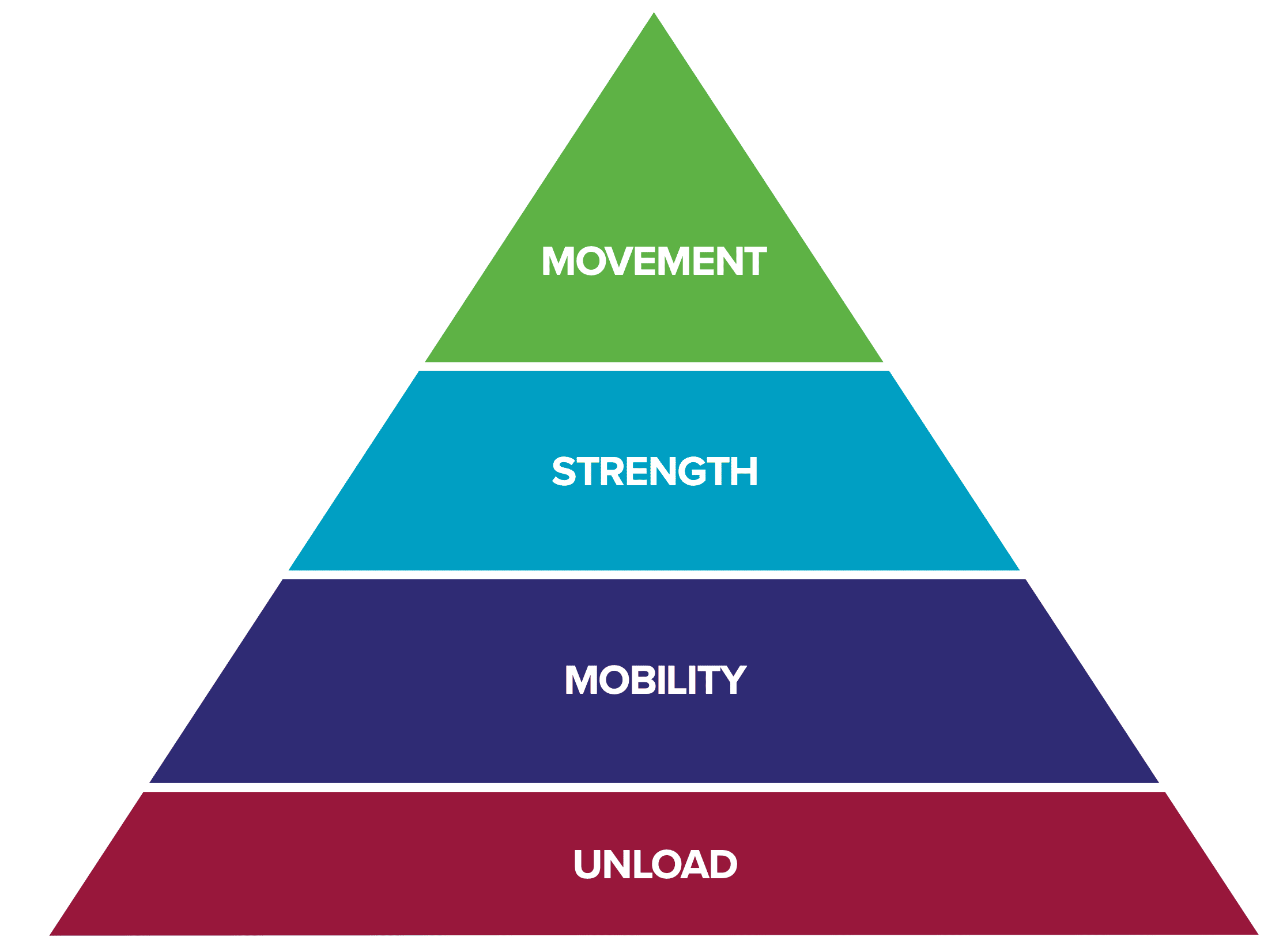
Unload
- Rest as needed! If your musculature is sprained or sore, rest it until pain subsides then continue into mobility work.
- While doing stretches, if you feel the intensity of the stretch is too much, then decrease your stretch time or decrease your range.
Mobility
- If you find that your hips just aren’t flexible, participate in a mobility routine and perform this routine everyday (or at least before climbing). Some example hip stretches are below.
- World’s best stretch series (hip flexor, glute, hamstring stretch) – 3 sets x 30 second holds
- Adductor frog stretch – 3 sets x 30 second holds (this is great to add into your routine if you found your Straddle assessment to be limited)
Strength
- Find your strength deficits and try to train them at least once a week
- As you get stronger, exercises may get easier so progress yourself by adding some more weight or by adding another set or two!
- SL bridge on Bosu w/ hamstring curl – 3 sets x 8 reps
- This one is great to add if you found your single leg bridge to be limited
- Copenhagen plank thrust – 3 sets x 8 reps
- This one is great to add if you found your Straddle was limited
- Lateral step ups – 3 sets x 8 reps
- This one is great to add if you found your single leg balance to be limited
Movement
- Climb with the focus of trying to keep your feet on the wall at all times
- Refine your heel hooks (also a great way to strengthen your hamstrings at different lengths)
- Refine your toe hooks
Author Bio
Billy Shiou is a 3rd year physical therapy student at USC in Los Angeles, CA. He’s been climbing for 8 years and plans to eventually specialize in generalized orthopedic care. Still, he plans to continue to work alongside his climbing community to prevent future injuries from ever happening.
For questions or for more information, please contact billy.shiou@gmail.com
References
- Weppler CH, Magnusson SP. Increasing muscle extensibility: a matter of increasing length or modifying sensation?. Phys Ther. 2010;90(3):438-449.
- Lieber RL, Fridén J. Functional and clinical significance of skeletal muscle architecture. Muscle Nerve. 2000;23(11):1647-1666.
- Marušič J, Vatovec R, Marković G, Šarabon N. Effects of eccentric training at long-muscle length on architectural and functional characteristics of the hamstrings. Scand J Med Sci Sports. 2020 Nov;30(11):2130-2142.
- Disclaimer – The content here is designed for information & education purposes only and the content is not intended for medical advice.


